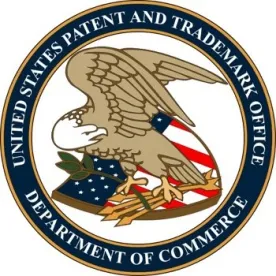The USPTO Patent Trial and Appeal Board (PTAB) recently revised its Standard Operating Procedures, including PTAB SOP 2 which creates a new procedure for Precedential Opinion Panel review and outlines a process anyone can follow to request that a decision be designated as precedential or informative. One impetus behind these revisions is the need to promote uniformity across the Patent Office. Stakeholders can do their part by elevating inconsistent decisions through the POP review process and nominating decisions for precedential designation.
PTAB SOP 2 – New POP Review
Revised PTAB SOP 2 creates a new Precedential Opinion Panel made up of the following default members or the following delegates:
Default members:
- The Director
- The Commissioner
- The Chief Judge
Possible delegates:
- The Deputy Director
- The Deputy Chief Judge
- An Operational Vice Chief Judge
The SOP explains that POP review “generally will be used to establish binding agency authority concerning major policy or procedural issues, or other issues of exceptional importance in the limited situations where it is appropriate to create such binding agency authority through adjudication before the Board.” These situations may include:
- addressing Constitutional questions
- addressing important issues regarding statutes, rules, and regulations
- addressing important issues regarding binding or precedential case law
- addressing issues of broad applicability to the Board
- resolving conflicts between Board decisions
- promoting promote certainty and consistency
- rehearing any case determined to warrant the Panel’s attention
POP review can be convened:
- at the Director’s initiative
- pursuant to a party’s request
- pursuant to a request by another member of the Board
The decision to convene (or not) is not reviewable.
SOP 2 sets forth specific procedures for a party to follow to request rehearing by the Precedential Opinion Panel, which must be done within the deadlines of 37 C.F.R. § 41.52(a) or 42.71(d), as applicable. One of the following statements must be made in the request:
Based on my professional judgment, I believe the Board panel decision is contrary to the following decision(s) of the Supreme Court of the United States, the United States Court of Appeals for the Federal Circuit, or the precedent(s) of the Board: (cite specific decisions).
Based on my professional judgment, I believe the Board panel decision is contrary to the following constitutional provision, statute, or regulation: (cite specific provision, statute, or regulation).
Based on my professional judgment, I believe this case requires an answer to one or more precedent-setting questions of exceptional importance (set forth each question in a separate sentence).
Requests will be reviewed by a Screening Committee made up of the members of the POP or their designees, who must be USPTO employees with a legal degree, selected from:
- APJs
- the Deputy Director
- individuals with a grade of SES or SL reporting directly or indirectly to the Commissioner for Patents, Deputy Commissioner for Patent Examination Policy, Deputy Commissioner for Patent Operations, or Deputy Commissioner for Patent Quality
- attorneys reporting directly or indirectly to the General Counsel or Solicitor
If convened, the POP can decide to grant rehearing or not, order supplemental briefing (and/or authorize amicus briefs) or not, conduct an oral hearing or not, etc. Once the POP reaches a decision, it may be designated as precedential, informative or routine.
PTAB SOP 2 – Precedential, Informative, and Routine Decisions
Revised SOP 2 explains the three types of PTAB decisions as follows:
- Every Board decision, other than a Precedential Opinion Panel decision, is a routinedecision until it is designated as precedential or informative. A routine decision is binding in the case in which it is made, but is not otherwise binding authority.
- A precedential decision is binding Board authority in subsequent matters involving similar facts or issues.
- An informative decision sets forth Board norms that should be followed in most cases, absent justification, although an informative decision is not binding authority on the Board.
SOP 2 sets forth detailed procedures by which any person can nominate a decision (or portion of a decision) to be designated as precedential or informative. Nominations go through a multi-level review process, first by a Screening Committee, then by an Executive Judges Committee (made up of the Chief Judge, the Deputy Chief Judge, and the three Operational Vice Chief Judges), and then the Director. The Executive Judges Committee may solicit and review comments from all APJs during a Board review period, but a decision can be made precedential without a formal vote or unanimous consent.
Stakeholder Role In Uniformity
One of Director Iancu’s goals is to promote uniformity across the USPTO. Parties can do their part by seeking POP review of decisions they find inconsistent with precedential court decisions, other Board decisions, or USPTO rules or guidance, and all stakeholders can do their part by nominating appropriate decisions for precedential or informative status, and identifying precedential or informative decisions that should be de-designated due to changes in the law.




 />i
/>i
